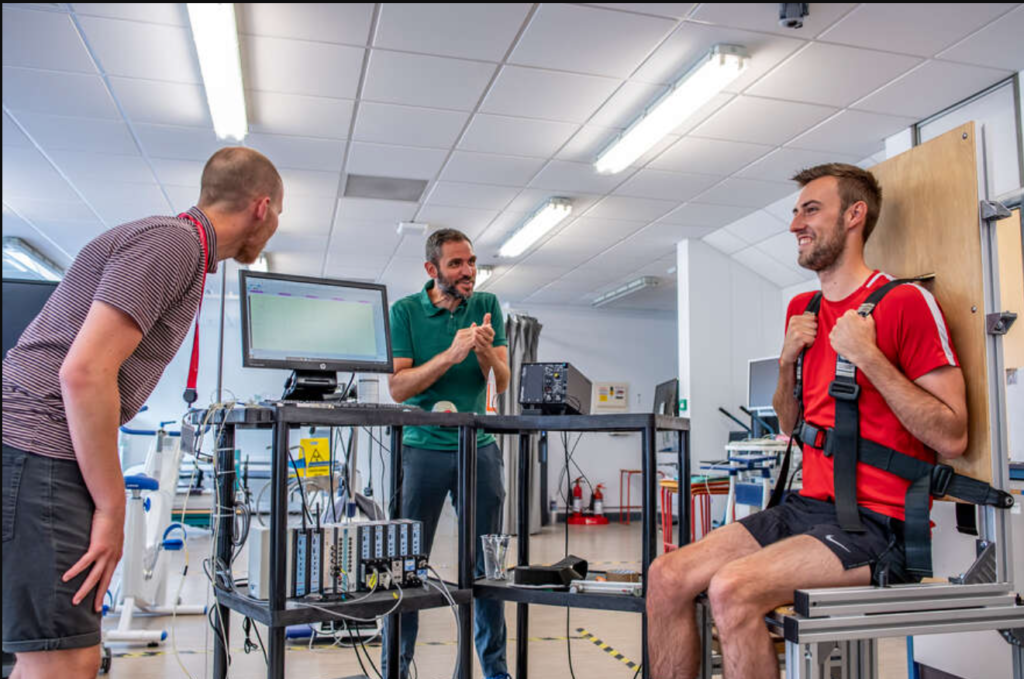Introduction: Where Innovation Meets Athleticism
As the world of sports evolves, so too does the demand for precision, data, and innovation. At the forefront of this evolution are sports technology labs — dynamic environments where science and sport intersect. These specialized facilities are not just shaping how athletes train and compete; they are redefining what’s possible in human performance.
1. The Foundation of Sports Technology Labs
What Are Sports Technology Labs?
Sports technology labs are cutting-edge R&D centers focused on integrating emerging technologies into every aspect of sports. Unlike traditional training facilities, these labs specialize in innovation — combining engineering, biomechanics, data science, and design to push the boundaries of athletic excellence.
The Collaborative Edge
Engineers, sports scientists, designers, and athletes work together in these labs, creating a unique ecosystem of collaboration that fosters continuous improvement and invention.
2. Bridging Technology and Athleticism
Smart Gear and Intelligent Fabrics
From smart fabrics that track biometric data to AI-enhanced footwear, sports technology labs are revolutionizing sports gear. These innovations enhance athletic performance by offering real-time feedback and optimizing training outcomes.
Wearables That Do More
Today’s wearables go far beyond tracking steps and heart rates. In sports technology labs, researchers are developing wearables that monitor hydration, muscle strain, and fatigue — helping athletes and coaches make informed, data-driven decisions.
3. Biomechanics in Motion
Precision Through Movement Analysis
Biomechanics is a cornerstone of sports technology labs. Using motion capture technology, pressure sensors, and force platforms, labs analyze every aspect of movement to identify inefficiencies and prevent injuries.
From Data to Performance Gains
By decoding an athlete’s physical patterns, biomechanics experts provide actionable insights to improve form, enhance power output, and tailor training programs to individual needs.
4. Augmented Reality: Enhancing Real-Time Training
Simulated Practice, Real Results
Sports technology labs use augmented reality (AR) to immerse athletes in simulated scenarios. Imagine a soccer player training against virtual defenders or a tennis player reacting to projected serves — AR allows for dynamic and adaptable training sessions.
Gamification Meets Strategy
AR also introduces gamification into training, making sessions more engaging while reinforcing cognitive decision-making and spatial awareness.
5. Virtual Reality: Redefining Sports Education
Training Without the Field
Virtual reality (VR) in sports technology labs offers athletes the ability to step into real-game simulations. Quarterbacks can rehearse playbooks, while golfers can perfect swings without touching the green.
Accelerated Learning Curves
VR training accelerates skill acquisition by recreating pressure-filled scenarios in a safe, repeatable environment, enabling athletes to mentally and physically prepare for competition.
6. Smart Arenas: The Future of Fan Engagement
Interactive Spectator Experiences
The innovation doesn’t stop at the athlete. Sports technology labs are influencing stadium design with smart arenas that use AR, mobile apps, and real-time stats to create interactive fan experiences.
Blurring the Line Between Player and Spectator
Fans are no longer passive viewers; they’re becoming active participants in the game experience — engaging with data, voting on plays, and viewing augmented replays from every angle.
7. Robotics in Training and Recovery
Mechanical Teammates and Trainers
From robotic training dummies to AI-powered exoskeletons, sports technology labs are integrating robotics into both high-performance training and rehabilitation processes.
Precision Rehab and Load Management
Robots offer unparalleled consistency, helping athletes rebuild strength post-injury or maintain form during recovery — making them indispensable partners in an athlete’s journey.
8. The Road Ahead: What’s Next for Sports Technology Labs
AI, Materials Science, and Neurotech
The future of sports technology labs is set to explore even deeper integrations of AI-driven coaching platforms, advanced composite materials for gear, and neurotechnology for mental conditioning.
Unleashing Limitless Potential
As boundaries blur between physical, digital, and cognitive performance, sports technology labs remain at the cutting edge — continuously pushing the frontier of human potential.
Conclusion: Redefining the Game, One Innovation at a Time
Sports technology labs are more than just high-tech facilities; they are the innovation engines of modern sports. From the biomechanics lab to the smart stadium, these spaces are driving a future where athletes perform smarter, fans engage deeper, and sports transcend their traditional limits.

